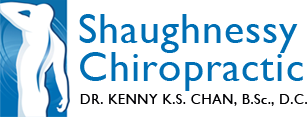Approximately three out of every 100 people have some form of scoliosis. Scoliosis can occur in child or in adults, most likely due to degenerative changes. In this article, we will be focusing on scoliosis in children. Scoliosis is an abnormal curvature of the spine. A normal spine has a few curves from the side view, but the spine should be straight from the back view. In scoliosis patients, the spine bends to one side or the other, causing compression of one side of the body. Scoliosis also involves a rotation of the spine, in which the individual vertebra’s bones twist around the long axis of the spine. Two very important things you must know about scoliosis are how to detect it and how to prevent it from getting worse.
 In 85% of the cases, the cause of the curvature is unknown and is categorized as idiopathic scoliosis. Scoliosis can also be inherited or caused by a birth defect, a neuromuscular disorder, cerebral palsy, neurofibromatosis or Marfan syndrome. Although the spine is bent in an unnatural position, there are usually no symptoms. Some people may experience vague muscle back pain, stiffness, or fatigue. The most common curves are convex to the right in the upper back (causing the right shoulder to be higher than the left one) and to the left in the lower back. One hip may also be higher than the other. A parent or friend may notice that the spine appears curved. Forward bending of the trunk may also show one side of the rib cage higher than the other side.
In 85% of the cases, the cause of the curvature is unknown and is categorized as idiopathic scoliosis. Scoliosis can also be inherited or caused by a birth defect, a neuromuscular disorder, cerebral palsy, neurofibromatosis or Marfan syndrome. Although the spine is bent in an unnatural position, there are usually no symptoms. Some people may experience vague muscle back pain, stiffness, or fatigue. The most common curves are convex to the right in the upper back (causing the right shoulder to be higher than the left one) and to the left in the lower back. One hip may also be higher than the other. A parent or friend may notice that the spine appears curved. Forward bending of the trunk may also show one side of the rib cage higher than the other side.
Early detection is the key to treat scoliosis. If left undetected, the curvature may worsen. The condition is most common between ages 10 and 12, just before puberty. For reasons that are still unclear, girls develop it more often than boys (about 60 to 80 per cent of cases are female), while boys represent more serious cases. Factors that can cause the curve to progress are scoliosis at a young age, the greater severity of the curve and family history of scoliosis.
Treatment will be based on the severity of the spine’s curvature. In mild cases, treatment is not necessary and in some cases, monitoring every six months is recommended. About 50% of children with scoliosis will need some form of treatment. On curves greater than 20 degrees, bracing may be prescribed, exercises to strengthen the weak muscles and a shoe lift may be necessary.
Dr. Christine Coillard and Dr. Charles Rivard, pediatric surgeons from Sainte-Justine Hospital in Montreal developed a new therapeutic approach for idiopathic scoliosis. They developed the SpineCor bracing system. The SpineCor bracing method is an adjustable, non-invasive technique that provides flexible, inconspicuous correction that continues as a child move and grows. Unlike traditional rigid systems, the SpineCor brace consists of four major components: (1) a plastic pelvic base, (2) a cotton bolero or vest, (3) tie bands and (4) four adjustable or “dynamic” bands. The components are simple to use, comfortable to wear, and most important, effective in its results. The goal of the dynamic brace is to maintain and improve spinal deformity while reeducating the body to return to a more normal posture. SpineCor works most effectively on patients who are skeletally immature with Cobb angle curvatures of less than 30 degrees.
For more information on the SpineCor brace, please contact Dr. Kenny Chan at 604-739-2118.

